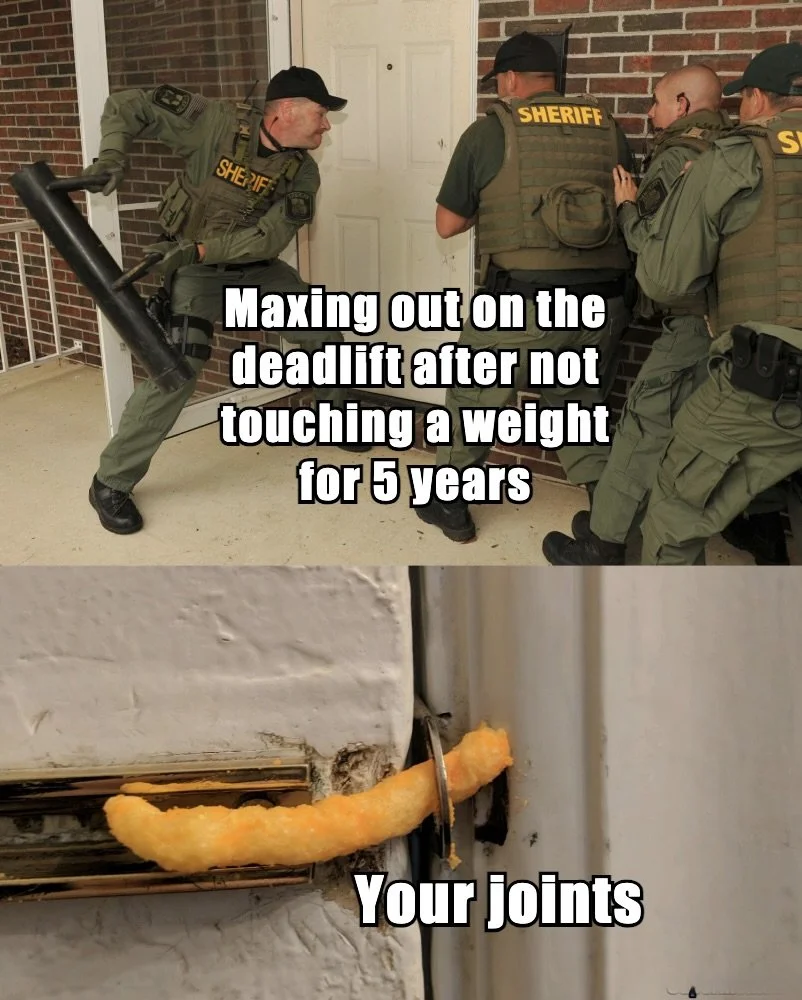April 13, 2025: How to Build Muscle Without Getting Injured
Hi friends,
Building muscle is key to living a long, healthy life, but how do we do it without getting injured?
Even experienced lifters face setbacks—from nagging joint pain to serious muscle tears—yet the consequences of avoiding resistance training altogether are far worse.
Starting around age 30-40, we naturally lose muscle mass (sarcopenia), but strategic training can dramatically slow or even reverse this decline.
Imagine maintaining the physical capability at 80 to effortlessly play with grandchildren, tackle challenging hikes, handle luggage during travel, and maintain independence in daily activities.
The foundation you build today determines your physical freedom tomorrow.
Follow these evidence-based strategies to develop strength while minimizing injury risk:
Step 1: Have a Plan
Generic fitness goals produce generic results. Instead:
Identify specific, measurable objectives (increasing deadlift by 50 pounds, performing 10 pull-ups)
Consider how these goals support broader life activities or sports
Set realistic timelines that acknowledge your current fitness level
Adjust your plan as you progress and your needs evolve
Step 2: Perfect Form Before Adding Load
Rushing to lift heavy weights without mastering movement patterns is the fast track to injury. Focus on these fundamental patterns:
Squat: The foundation of lower body strength
Hinge: Essential for deadlifts and protecting your back
Horizontal Push/Pull: Bench press and rowing variations
Vertical Push/Pull: Overhead press and pulldown movements
Consider video recording your lifts or working with a qualified coach—the investment in proper technique pays dividends in injury prevention.
Step 3: Implement Progressive Overload
You should focus on increasing weight, reps, or sets by small increments (5-10%) rather than making dramatic jumps.
Your muscles adapt to stress over time, but sudden increases invite injury. Lifting can sometimes be a monotonous process, but stick with these small jumps to get the best results.
Also, there is not much of a need to train to failure when trying to build muscle mass and strength. You can get similar or even greater benefits if you finish a set with 1-4 repetitions left in the tank.
Occasionally, it’s useful to train until you can’t get another repetition, but this style of training makes you vulnerable to injury, and it also dramatically increases fatigue—requiring more time for rest and recovery before lifting again.
Step 4: Prioritize recovery
The efficacy of your workout is only as great as your ability to recover.
Muscle stimulus (lifting weights) and fatigue are two sides of the same coin.
If you solely focus on grinding yourself to the bone but don’t take your recovery seriously, your body won’t be able to make the strength and muscle mass adaptations.
Make sure you’re eating enough protein (0.7 to 1 gram per pound of body weight), sleeping well (7-9 hours/night), and mitigating stress.
Step 5: Incorporate a warmup and mobility work before your lift
Take 5-10 minutes before your lift to get your body temperature and heart rate up to prime the body for what’s to come. You can try walking, jogging, walking on an incline, or just doing body weight exercises.
You should also practice some of the movements that you’re going to be doing during your lift.
For example, if you’re going to be squatting:
Work on your hip hinge mechanics and core bracing before getting under the bar
If the overhead press is your main focus for the workout:
Focus on making sure your lat mobility is in check before adding weight
Remember that sustainable progress beats impressive but short-lived gains. The best time to start strength training was years ago. The second best time to start is now!
Until next week,
Kevin
✍️ Quote I’m reflecting upon
"The man who moves a mountain begins by carrying away small stones."
